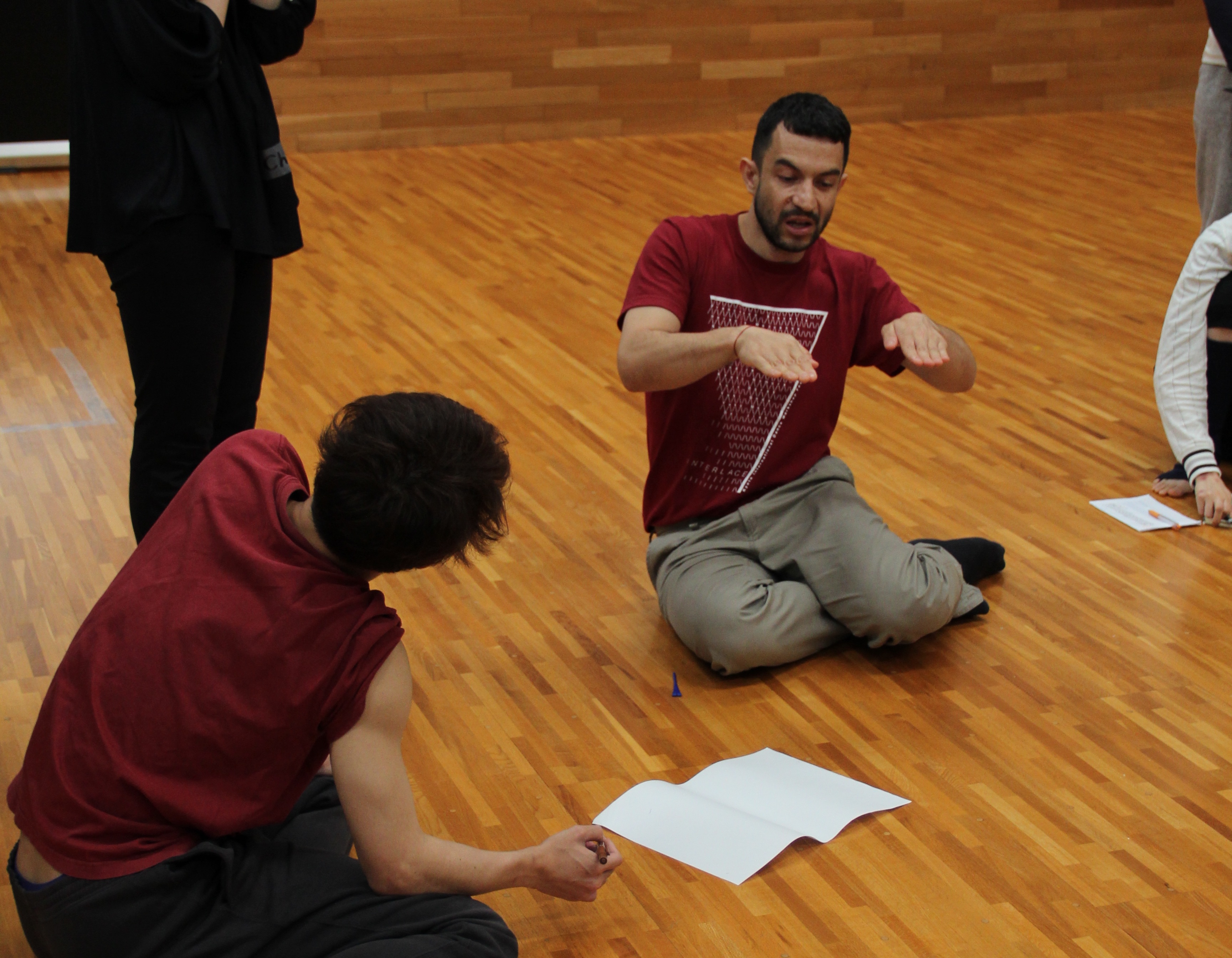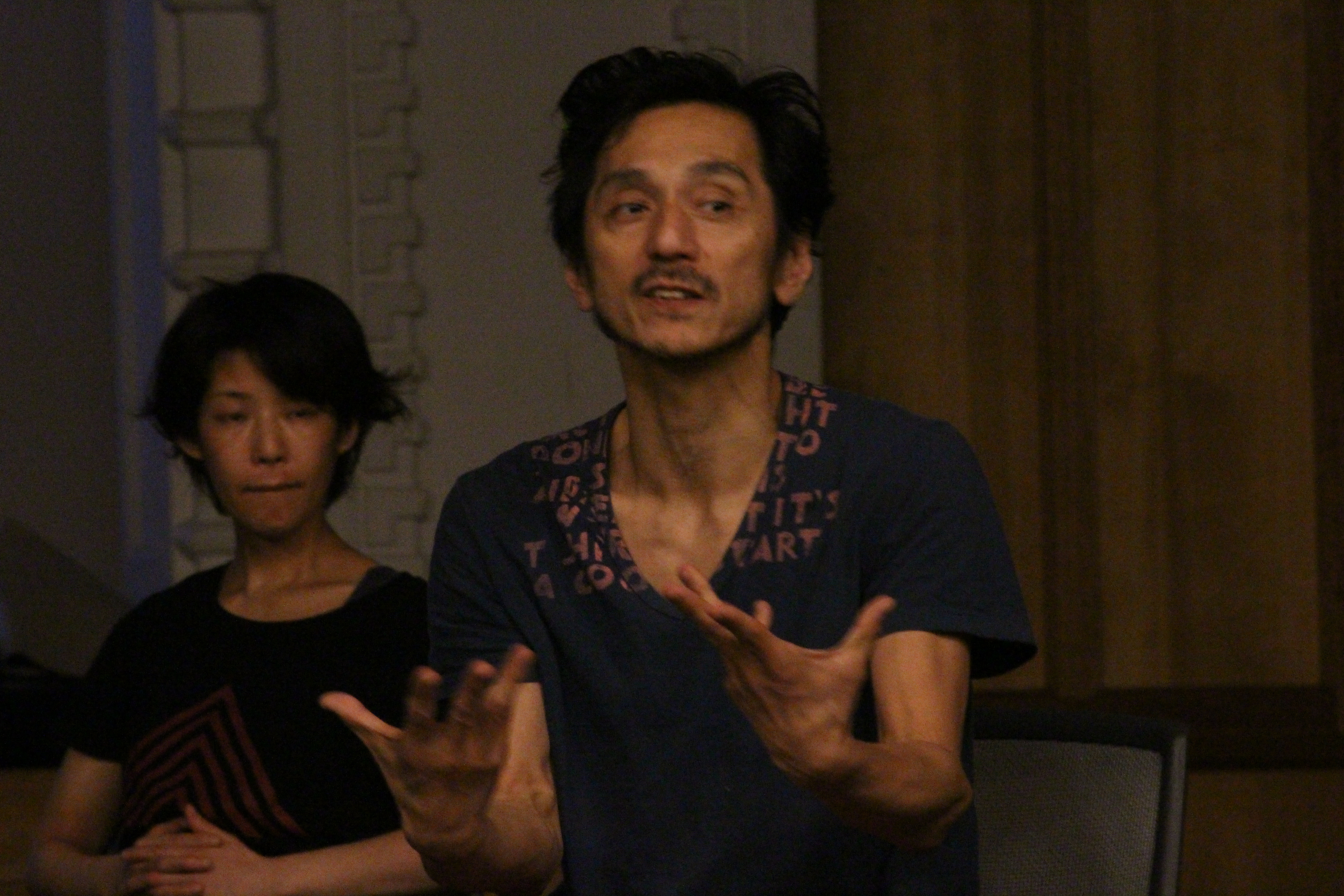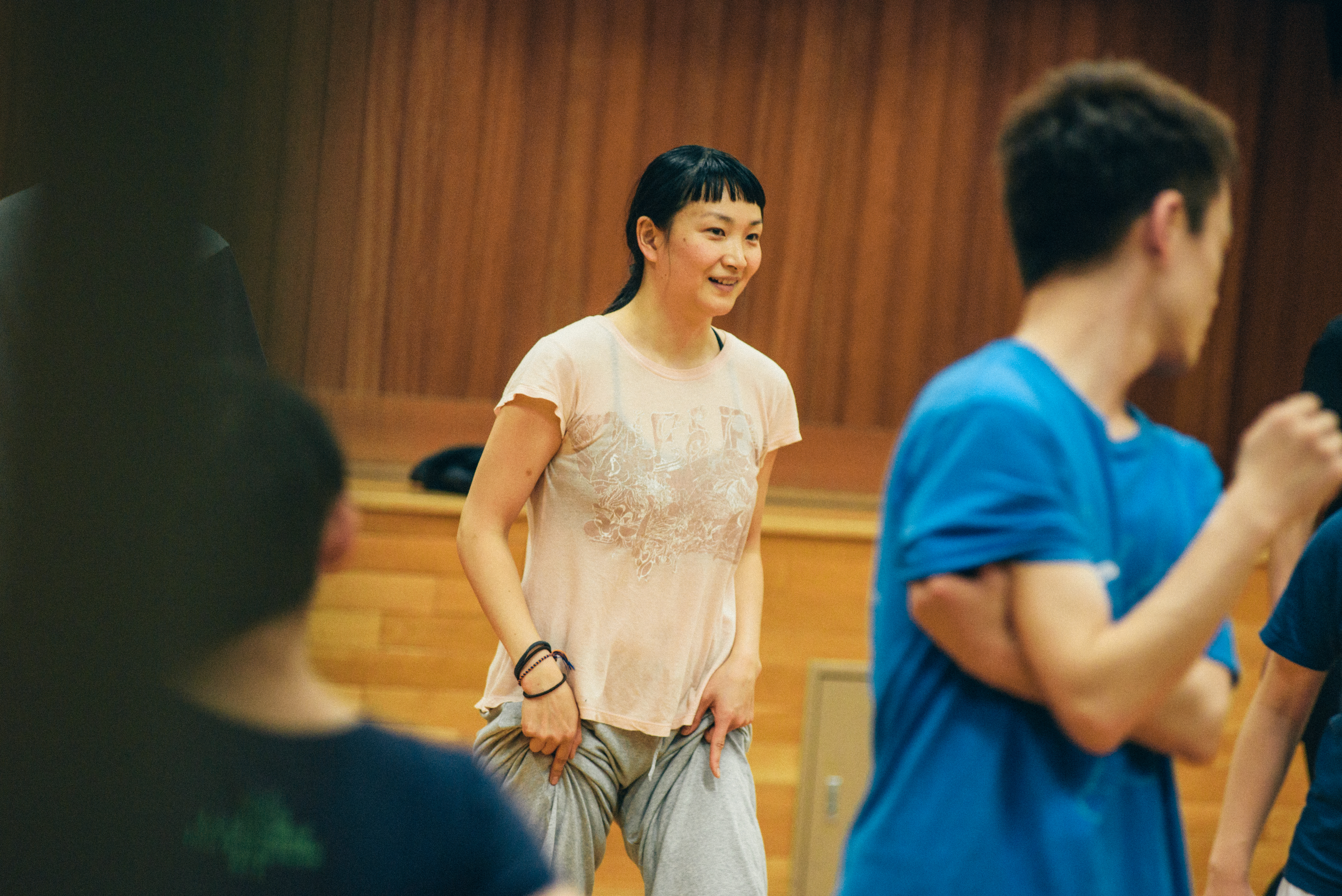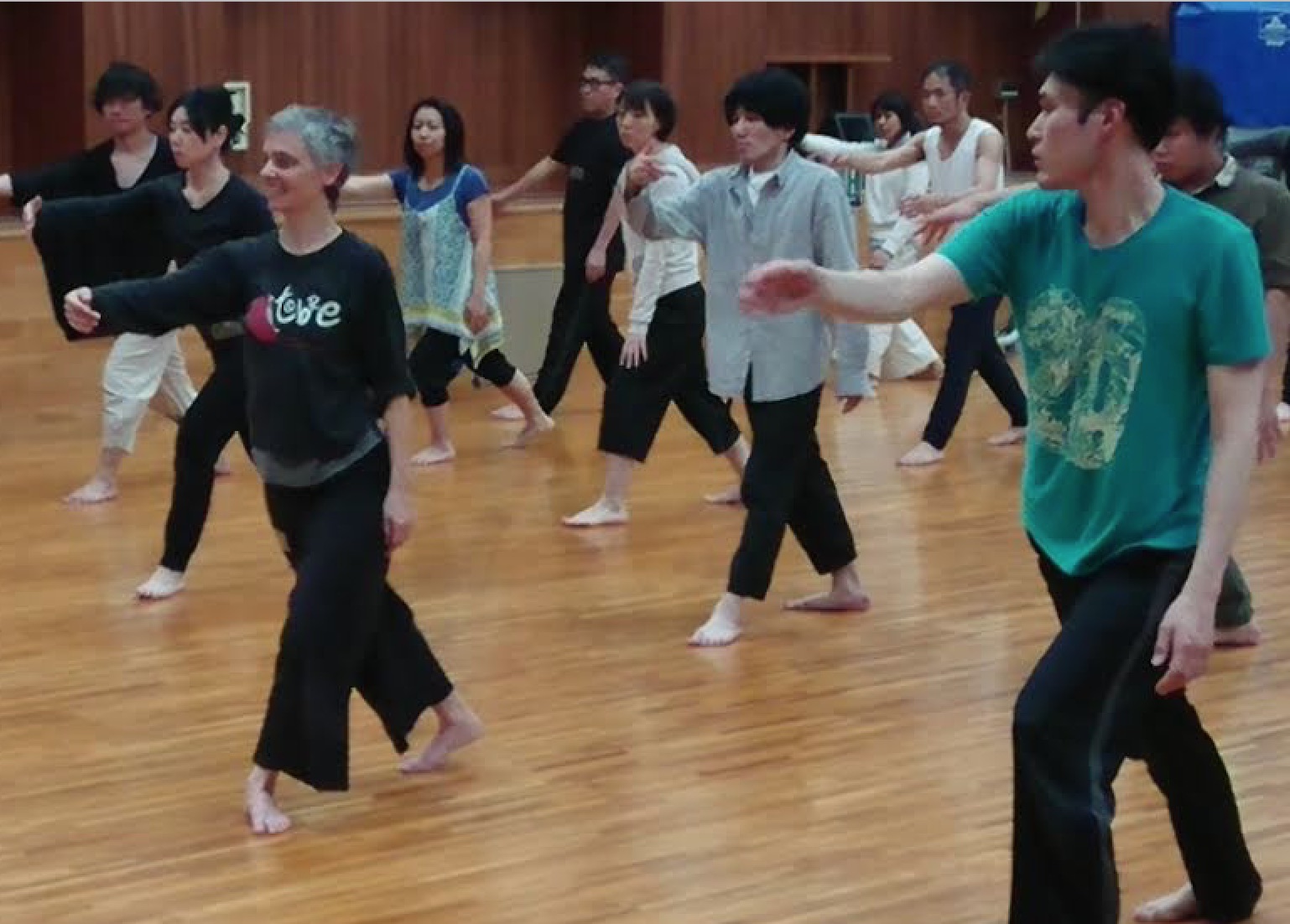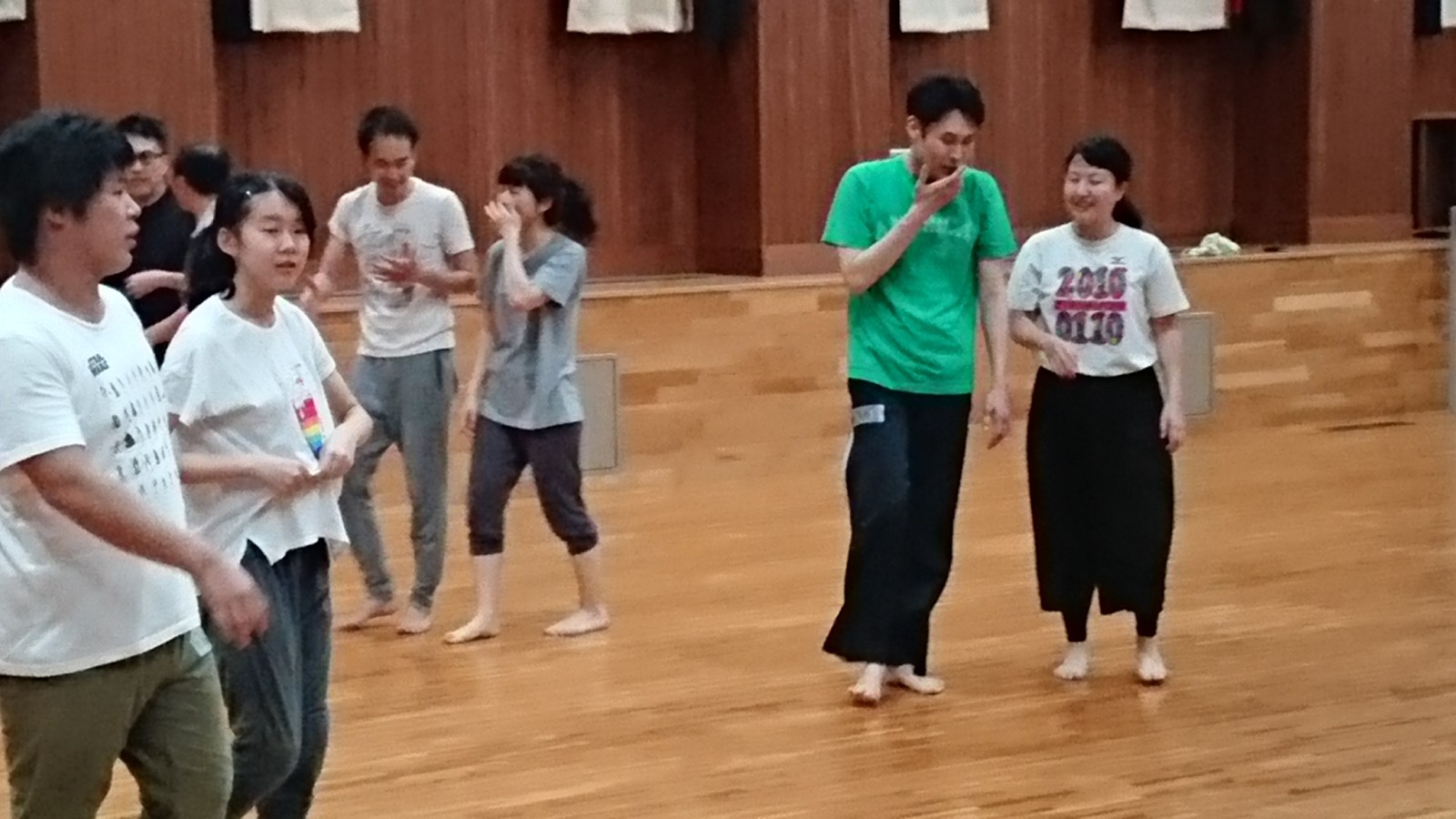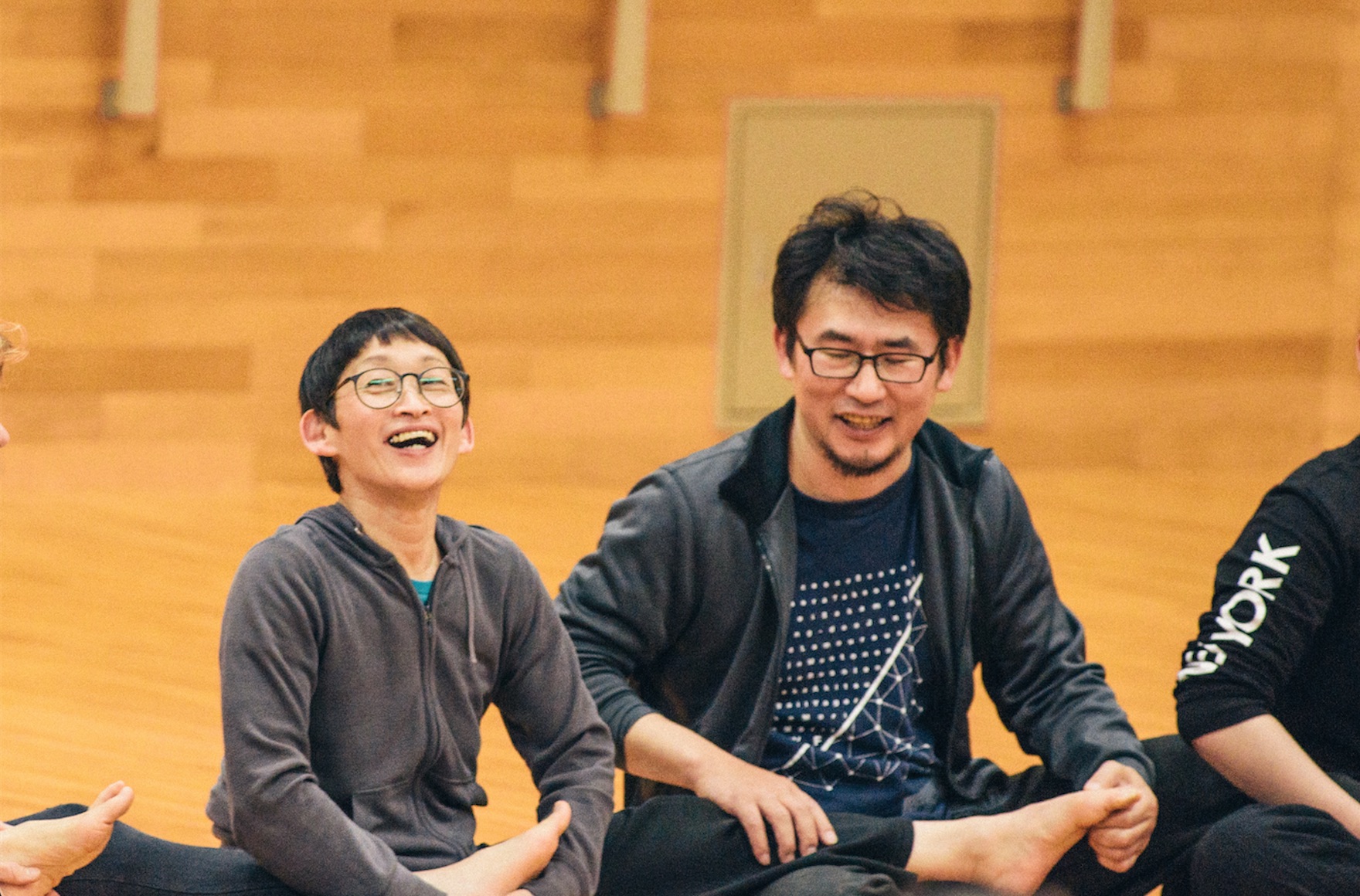【Hot Summer in Kyoto ’11】dialogue featuring Ko Murobushi × Jung Young-Doo
2011年08月16日
interviewer, editor, translator:Shoko Takayama, Maya Nakamura assistant translator:Bae Suhyun, Caitlin Coker
We set up an unique meeting between two of the most popular “Hot Summer” teachers, Ko Murobushi and Jung Young-Doo, artists from different countries and generations, dancing across borders. The time we shared with them was so rich with miscommunication and discommunication that we decided to release its video document as it was with subtitles. (Click here to the video and Japanese digest version!) Interviewer : Could you start with a keyword “East Asia”? Murobushi : I am… of course you know something about Butoh. I started dancing when I saw Tatsumi Hijikata. But I have gone to France since the end of 70’s. So I jumped to Europe over Asia in a way. Though I wanted to know more about Asia, (* Murobushi said later that he has actually been in many countries in Asia, like Korea, China, India, Thailand, Indonesia, and the Philippines.) I just have certain knowledge about that, and cannot say much about it. And my way of thinking has changed after I went to Europe. The topic of “East Asia” will be more familiar to Mr. Jung. I want to hear your opinion about so-called Korean Dance or Japanese Dance. That’s my first impression. Jung : I also cannot say much about that, East Asia. But I understand some points about Korean and Asian culture. When I make my dance, I don’t consider much that I’m Asian and Korean. That’s because I become fixated on that point, when I make my dance as a Korean and Asian. But I am aware that I was born in Korea, I’m Asian, and this background effects my dance. Sometimes when I go to Europe or America and other Asian countries I get interested in and think about how western people think more about oriental things than actual Asian people. I feel, I received more influence from western countries than from Korean traditional practices. When I was a child, I was wondering about the strength of western and eastern people. I was thinking about the difference. But now on the contrary, I rather think about the similarity. If I speak about it more deeply, I will speak too much… Murobushi : It doesn’t matter. I would like you to go further. That’s important. Jung : OK. I’ll try. I’m wondering about “Who I am.” Because I think, I cannot dance without knowing what I am. So I’m questioning about myself. 10 years ago, I was not able to dance, because I felt unstable about where I stand. Afterward when I look back, that moment I was confused by Western culture and what I learned in school, so I stopped. Those who doubt the Western culture and Korean traditional culture search for different things. I thought about what influence I received from Western culture … and my body…. For example, I thought when I danced; Where did this dance come from? This is not my dance… So the dance became difficult for me. This dance may not be mine, but Western…This may be what I learned at school…This may be what I saw somewhere… So, what can be my dance? Then I stopped. Murobushi : Didn’t you try to dance at the point where you thought you cannot? Jung : For the moment I had a hard time as I thought that there’s no dance of my own. Murobushi : What you told me now is a matter of Butoh. I was not the one who said this, but Tatsumi Hijikata, when he started Butoh, used the phrase “standing corpse”– have you heard this? “Standing Dead Body.” That’s the issue or main theme of Butoh. It’s really similar to the situation which you have told me now. In Japan there was a way to move the body which is traditional and Japanese, and also there was a Western influence. Then between the two sides, Japan had a world war. Bad things happened to Korea and China. After everything, the body could not go anywhere. The Standing Dead Body can’t go in the direction of traditional things nor towards the influence of Western culture. But, after Japan lost in the war, Japan couldn’t stand with it’s own two feet. Tatsumi called it the “Dead Body”. A dead body of course cannot dance. But the person who said that it dances was Hijikata. Hijikata’s first manifestation about Butoh dance, “Standing Dead Body”, is very similar situation of your problem. Between tradition and Influence from Europe. It’s very interesting. I have a question about in the Korean contemporary dance or contemporary art scene, what is the problem with the traditional… or, I don’t know, maybe with Korean traditional dance. It’s more technical? Japan also… I don’t know why European influence is strong to Korea or to Japan. I think it’s very very political thing, because I’m not political mover. But I always continue to think about Japan with political thing with cultures. And culture always belongs to politics. And I think if I am political fighter, maybe I want to continue to live in Japan during the 80’s and 90’s. But I said “Bye-Bye”, and I went to Europe. But I continue to think about my political body. Jung:I agree with that. I’m really aware that Korean culture and especially contemporary art is really from the western influence with capitalism money. I think that is not only in Korea, Japan too, like Globalization. I think artist is like…we are not a political mover, but we are kind of, another kind of political mover because use our body and our culture to fight with politic. So I always think how can I fight and how can I against from my dance to the world, to the government. Murobushi : You saw Japanese contemporary art and met Japanese artists. How do you see? Jung : It’s really different than Korean contemporary dance. I’m not really sure, but when I saw contemporary dance in Japan, I think sometime too much improvisation, Sometimes for me, too much emotion and too much passion. So I’m curious if they loose some passion and emotion, because emotion is really difficult to control, I think, so if they don’t have emotion, then how they dance. And then, when they make some design for architect for city, house, and space it is very nice and clear. But relationship of body to space, body to direction, and people to people, “what is the concept of movement?” is normally I didn’t saw see when I saw Japanese contemporary dance. In Korea it is opposite. I think this problem is from the academic system. Because in Korea, we have many dance universities and so many teachers from out side. So we have very strong technique. With their brain, they don’t know, but with their bodies they know how to make design, and how to go out and come in like design. But I didn’t see much about passion and emotion of inside. But In Japan, I think, there are many and sometimes I got impressed; how they get kind of essence or heart- hot and great heart. Maybe In Korea, we need that. In Japan, on the other hand, maybe they don’t know how to use their heart for composition on the stage, In Korea, it’s opposite. Concept is too much and too big like conceptual art. They talk a lot and put concept and meaning a lot. But normally they don’t know how to make it concrete, for example how they stand, how they go out and in, how they make broken line… and so on. What is the relationship between dancer and space, or direction, or time. Maybe in Korea too, this is the problem in both. Too much concept and its Output is not really good and not concrete. Just like fliers, they spread their bodies, this is my opinion. I have a question. Mr.Murobushi, you went to Europe and what is your new view? Or what did you discover in Europe, also in Japan? Murobushi : Well…that’s a very hard question… very difficult to say… Jung : PLEASE! Murobushi : I think my problem has not really changed in Europe. First position, or starting point of my motivation is similar with yours. Though I didn’t think much about what I am. But I felt I am completely outsider or out of Japan. So it’s very difficult to engage into political movement or cultural movement. Because I don’t like to go into the party of the cultural and political movement. But in dance, during dancing, I feel completely alone and my body completely belongs to me. But this is a big question to me. Because the body was born from my parents, my Japanese family. I think about historical stories. On the other hand, I don’t care about, I am very strange. The body is always something like a stranger and always going already to future. Our thinking always come back but it’s always too late. So, my reflection is already stupid for me. I think I am Japanese, but it’s already past. When I go to passport control, it’s always strange. “You are Japanese”. Of course it’s rule, but it’s already old and not really present. Because my paper belongs to yesterday, or one second before. My body is already past or front. And I didn’t change this idea. Because I think this contradiction or paradox, I want to meet with European students and people. For this thinking didn’t change. Jung : I see. Murobushi : And another problem; if, for example, I said about Butoh history, Tastumi Hijikata started with the point, so called “stranger”. I accept this feeling. But He tried to make his own style from it and it’s a Hijikata’s style. But, I don’t know, it’s Hijikata’s followers, me also a follower generation, they believed in his style and copied what they learned, Hijikata’s style. In this way Butoh became some stereotype. They make Butoh Stereotype. It’s not my way. Because It’s always… Jung : I really agree, really understand. Because, me too, when I come to Japan, at the emigration, I give the passport, at that time I realize, “Ah, I am Korean…” When I meet a Japanese friend, sometimes they ask me “How is it in Korea?” and I think “Ah, I am Korean…” So normally I don’t care I am a Korean, I am a man, how old I am…but when I met other people, especially from other countries, and they asked me about my identity, then my thinking goes back to who am I and from where? Since the time I couldn’t move, slowly I accept, “Ah, maybe this movement already includes me, maybe it’s mine. This is from western, but I think it already includes me. It’s impossible to take off. So I accept myself. I think more important to question: how can I use this technique and how can I gather and transform it to my own technique, or to my own topic. So from that time slowly slowly I can move. And now, I am thinking about DNA. When I go to abroad, they say to me ” you are Asian, so please tell me something about Asia” then I thinking I am Asian, I am Korean, I grew up in the country side, my family, my family’s blood, my father…like this. Maybe some DNA runs through. I took DNA from my father, so it’s like history, Korea and the foods, the environment… how they impact me nationally, and then education from out side, how it impacts me. So I really understand. When I try to see to the future, that time also I need to see to go back. I am from where, and I go to where. and especially the contemporary artist’s spirit is “now and here”, so why is the history of technology different from that of art? Many critics or many people think that contemporary dance is better than modern dance, modern dance is better than dance of romanticism, romanticism is better than classical and so on. I think, especially critique and journalism think so. But I don’t think so. Since before 10 years ago, also there, contemporary spirits were present, I think. And for the future too, for example 1000 years later, really traditional spirits go there. But science and technology are different. Technique of the 20th century is better than that of 19th century, 19th is better than 18th… I think many people confuse that Today’s ART is better than old one yesterday`s. But I don`t know. This is my, another question : how I make more… Muroboshi : What did he just say? Today’s art is more…? Interviewer : The thought that present art is more advanced than past art. Muroboshi : And that is Jung’s doubt? Interviewer : What is Jung’s doubt? Muroboshi : What do you think, contemporary art now is better than before? Jung : No, I don’t think so. Something is better, but not all. I still enjoy modern dance and music. I still enjoy classical and traditional music. I think it depends on taste and quality. Murobushi:Yeah, Yeah, Yeah, Jung : Not that contemporary dance is better than modern dance. But technology and science are different. Murobushi:Technology is always progress? Jung : Yes, New Technology is better than old, but how is Art? Murobushi : That is the modernism, isn’t that? Jung : Art is all equal. Contemporary Art and traditional art is equal. Murobushi:It’s difficult…it’s another subject, isn’t it? Because art always belongs to age or time. What is time and age? it’s always our language, also it’s the culture, but now I agree about that, because of globalization, I always can stay in many different places. We can travel, we can talk with different languages together with same situation… Interviewer : Could we have some message to dancers and people who like dancing? Murobushi:I want to talk about what is art, what is modern art, what is post modern art…well what can I say…What is globalization? What is capitalism? Communism is down, I don’t want to belong to some systems, and also ideology. But what is the artistic vision or fight. And I want to talk about this was. It’s a Japanese man said “It’s a very similar with the feeling of being stranger” and This was absolutely foreigner. These are famous words. Always I cannot belong to Japan. When I come to Europe, I am not European of course. When I start to talk with You in English, it’s very strange for me, but when I come back Japan and when I start to talk in Japanese, also is my Japanese conversation is already something out of Japanese contemporary mood. And this is very basic life for me. When I start to dance in several different places, or theatres. “What is theatre” is my problem. Theatre is not my real professional house, home. It isn’t home for me. In this case, I always I felt this is not my place and I want to talk this feeling with my audience. And for me, it’s something like a political fight with my body and language, and there is no ending. I think the end of my life, I think I am fighter, or…..that is the message to the Japanese contemporary young students or dancers. Please fight with Japan. And now the Japanese young generation or all people in Japan want to go to northeast district of Japan because of this big earthquake, catastrophe. They are becoming to one thought and they must help something. Of course it’s good thing. But it’s not only that, I think. And I have another feeling. Please let it. Japan is going down and going out, I can look. Bye bye Japan. Sorry. I’m very sorry. Jung : I say to something similar …always I’m thinking how can I escape ideology or ism or my blood is my topic…how can I escape my country and my nationality. But at the same time, I’m looking for who I am. Artist is not fighter, real political fighter, capitalism fighter. But we need to fight until the end, forever. But I think there is no answer, no solution, but only question until the end. So please, dancer, please keep going until the end and please look what is similar to another person, to another words. What is the similarity between me and another dancer, or another teacher. Also what is different between me and another person. This question is for understanding and for communication between each other. Why are we different? This question is for communication with each other not to make a big distance, from this question. So there are two different questions; what is similar and what is different? Those questions are for communication and not for making distance. Please think about it. Murobushi : It’s a big message. What is the most important thing for the communication? How to communicate? How to mix this difference and…OK, that’s all for today.
—END—-
-
- ■2019.7.3
【暑い夏19】ダンス、まずその前に・・・ or そ... - 〈Dビギナークラス:ルイス・ガレー〉ワークショップ・レポート 4月30日(火)@京都芸術センター、フリースペース &nbs........
- ■2019.7.3
-
- ■2019.7.3
【暑い夏19】動きに出会う... - 〈C-3:ホラシオ・マクアクア〉 〈Dビギナー:ホラシオ・マクアクア〉 参加日2019年4月27日〜5月4日 私は、1........
- ■2019.7.3
-
- ■2018.7.9
【暑い夏18】存在することと存在しないこと... - 〈C-3:川口隆夫〉ワークショップレポート 参加日4/27〜5/6 「舞踏作品を完コピするんだ」と思いながら、川口さんクラ........
- ■2018.7.9
-
- ■2018.7.9
【暑い夏18】2018年のチョンさんクラスを覗いた... - 〈C-1:チョン・ヨンドゥ〉見学&インタビュー 見学日5/5 チョンさんのクラスに見学に伺ったのは、ショーイングが予定され........
- ■2018.7.9
-
- ■2018.6.28
【暑い夏18】ダンスを見る目に見えないダンス... - 〈B-2:長内裕美〉ワークショップレポート ● 導入のインパクト 「はい。一分間笑います。」カモシカのよ........
- ■2018.6.28
-
- ■2018.6.27
【暑い夏18】静から動へ 内側から外側へ... - 〈A-1:カティア・ムストネン〉ワークショップレポート 取材日:4/27, 5/1•5 私はダンスの素人である。ダン........
- ■2018.6.27
-
- ■2018.6.27
【暑い夏18】鏡を通して新しい自分に出会う --今... - 〈こどもとおとな:秋津さやか〉ワークショップレポート(取材日4/21) 「こどもの集中力を高めるため、レッスン........
- ■2018.6.27
-
- ■2018.6.27
【暑い夏18】“考えすぎると動けなくなる”につけ... - 〈ビギナークラス/アビゲイル・イェーガー(1)〉ワークショップレポート 4/28 京都芸術センターフリースペ........
- ■2018.6.27
-
- ■2018.6.27
【暑い夏18】安心感と楽しさ……笑顔あふれるカティ... - 〈ビギナークラス/カティア・ムストネン〉ワークショップレポート 4/29 京都芸術センターフリースペース &nb........
- ■2018.6.27
-
- ■2018.6.27
【暑い夏18】進化するように対話する—— はじめに... - 〈ビギナークラス/坂本公成・森裕子〉ワークショップレポート 4/27 京都芸術センターフリースペース 「........
- ■2018.6.27

